40 Turning Points on the Cleveland Browns’ Path to Contention
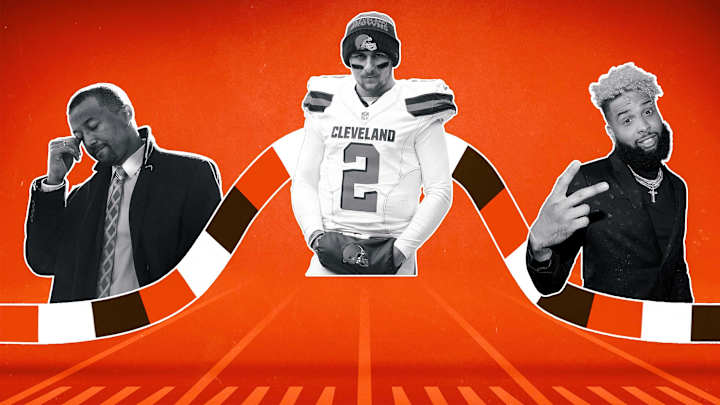
It’s 2019, and the Cleveland Browns are the betting favorite to win the AFC North. Yes, those Browns. The same Browns that went 1-31 from 2016 to 2017. The same Browns that have had five head coaches and four front office regimes in the last seven years. The same Browns that haven’t had a winning season in 11 years, with three times as many losses as wins since an ownership change in 2012. The same Browns that made six first-round picks from 2012-2016—none of whom are currently on the roster. Yes, those Browns.
To truly appreciate the Browns’ newfound relevance, you must first be aware of the futility and dysfunction that have plagued the franchise in recent years. To grasp the significance of Cleveland’s rise, you need to recall the years of bottomless toil, the spectacular failures and the dumpster fires. To understand how much Baker Mayfield means to this dedicated fan base, you need to remember Brandon Weeden, Johnny Manziel, Robert Griffin III and DeShone Kizer.
So let’s go down memory lane. Before the Browns renew the annual chase for their first playoff berth since 2002, let’s remember the lowest of the lows and the inflection points in this latest epoch of Browns history. Let’s reflect on the boneheaded decisions and ever-spinning revolving door of quarterbacks that defined an era of Browns football. But let’s also look at the savvy moves lurking in the background that set the Browns up to finally contend.
A timeline of the Browns’ surge to prominence could start in a few places, but starting in 2012, when Jimmy Haslam purchased the team from owner Randy Lerner, seems like a good place to begin.
But remember: These are not 40 steps to building a winner. These are 40 turning points on their journey.
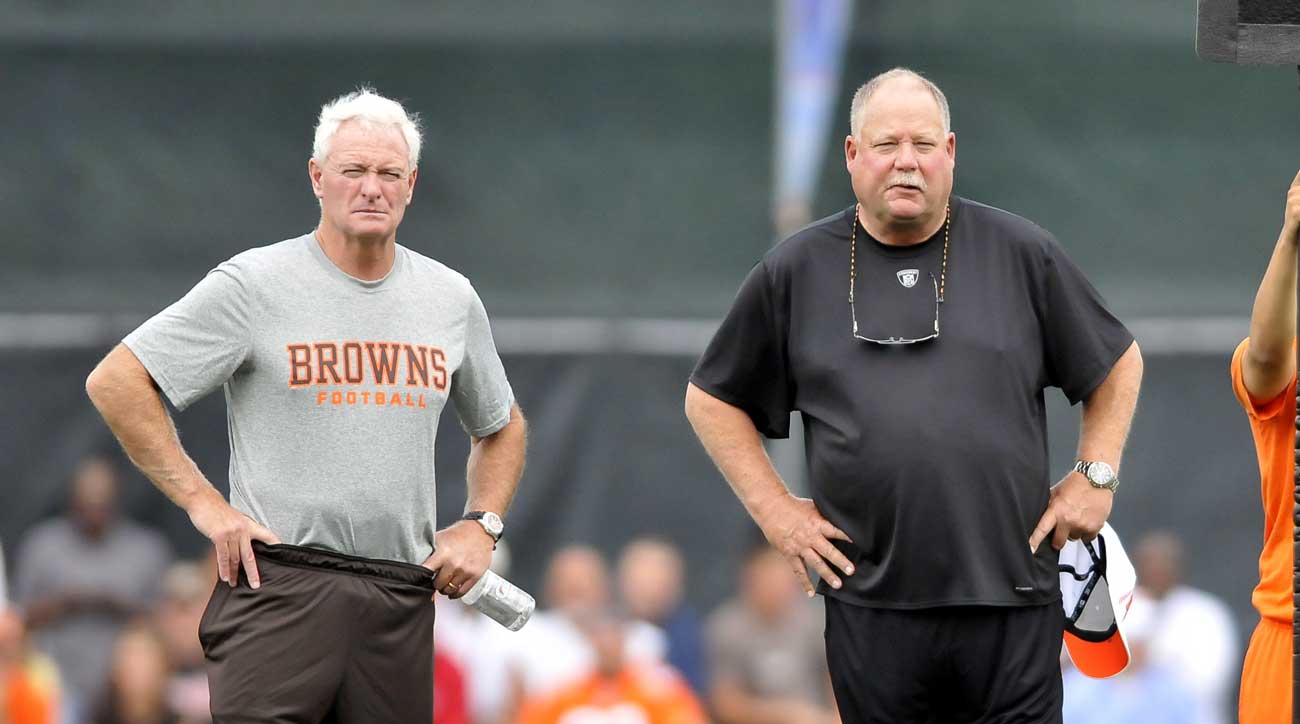
1. October 2012: Jimmy Haslam buys the Browns for more than $1 billion
Haslam, who made his fortune building Pilot Flying J (an operator for truck stops and travel centers that later paid a $92 million fine to settle a fraud case, for a scheme which the FBI says Haslam was aware of), purchased 70 percent of the Browns for $1.05 billion after previously being a minority owner of the rival Pittsburgh Steelers. It makes sense to start with Haslam because he has been a hands-on owner, directly making many key decisions that have guided the team’s future.
Haslam’s purchase was finalized in the middle of the 2012 season, in which the Browns went 5-11—their fifth straight season with no more than five wins. He announced that 2012 would be the last season in Cleveland for team president Mike Holmgren and brought in his replacement Michael Lombardi to work with Holmgren during a transition period.
2. January 2013: The Browns hire Sashi Brown as executive vice president and general counsel, Michael Lombardi becomes vice president of player personnel and Rob Chudzinski is hired as head coach
Haslam wasted no time before the first major shakeup of his tenure. Chudzinski parlayed two years of success as Cam Newton’s offensive coordinator in Carolina into the head coaching job with the Browns. Lombardi, despised by many Browns fans after releasing Bernie Kosar during a previous stint in 1993, had returned to Cleveland’s front office the previous season after working as an analyst for NFL Network. Haslam also brought in Sashi Brown, a graduate of Harvard Law School who had carved out a role with the Jaguars as lead counsel, to oversee the team’s salary cap, negotiations of player contracts and various business responsibilities.
3. March 2013: The Browns hire Ray Farmer as assistant general manager and promote Michael Lombardi to general manager
Less than two months after hiring Lombardi and Brown, Haslam tweaked the front office again, this time a week before free agency. The Browns hired former Chiefs personnel director Ray Farmer as assistant general manager, and elevated Lombardi to general manager, though his responsibilities would remain the same. In essence, Haslam added another voice to the front office.
4. September 2013: The Browns trade Trent Richardson for a 2014 first-round pick
The Richardson trade signaled an adherence to two of Sashi Brown’s core tenets: accumulate draft capital and clear the decks of expensive salaries. The Browns drafted Richardson third overall in 2012, but he rushed for a disappointing 3.6 yards per carry as a rookie. His value was still high two games into his second season, given his draft pedigree and age. The Browns sold high on a young tailback who would eventually be remembered as one of the bigger busts in NFL history. Getting a first-round pick from the Colts for Richardson was a sensible, forward-thinking move.
5. November/December 2013: Josh Gordon becomes the first player ever with back-to-back 200-yard receiving games
Gordon emerged in 2013 as one of the best wide receivers in the NFL. The 22-year-old, second-year receiver had 87 catches for a league-leading 1,646 yards and nine touchdowns…in just 14 games. (He was suspended for Weeks 1 and 2 for violating the league’s substance abuse policy.) In Week 12 and 13 games against the Steelers and Jaguars, Gordon had 237 and 261 yards receiving, respectively, with Brandon Weeden and Jason Campbell as his quarterbacks. Amid all of their struggles—Cleveland lost both of Gordon’s 200-yard games during a season-ending seven-game losing streak—the Browns appeared to find a star in Gordon, who was named First Team All-Pro.
6. December 2013/January 2014: The Browns fire head coach Rob Chudzinski and hire Mike Pettine as head coach
The Browns went 4-12 in 2013, and fired Chudzinski after just one season. The move drew questions from some players, notably All-Pro offensive tackle Joe Thomas. After a drawn-out coaching search that saw the Browns spurned by several candidates (Dan Quinn, Todd Bowles and Josh McDaniels are among those who interviewed), the team hired Bills defensive coordinator Mike Pettine as a first-time head coach.
7. February 2014: GM Michael Lombardi and CEO Joe Banner leave, Ray Farmer is promoted to general manager
A month after Pettine’s hiring, the Browns announced Banner and Lombardi, who contributed to the decision to hire Pettine, were leaving the organization. In what many viewed as a Haslam-orchestrated decision to clean house, Farmer rose to GM. The timing here—after hiring the new head coach, a month into the team’s offseason—was puzzling.
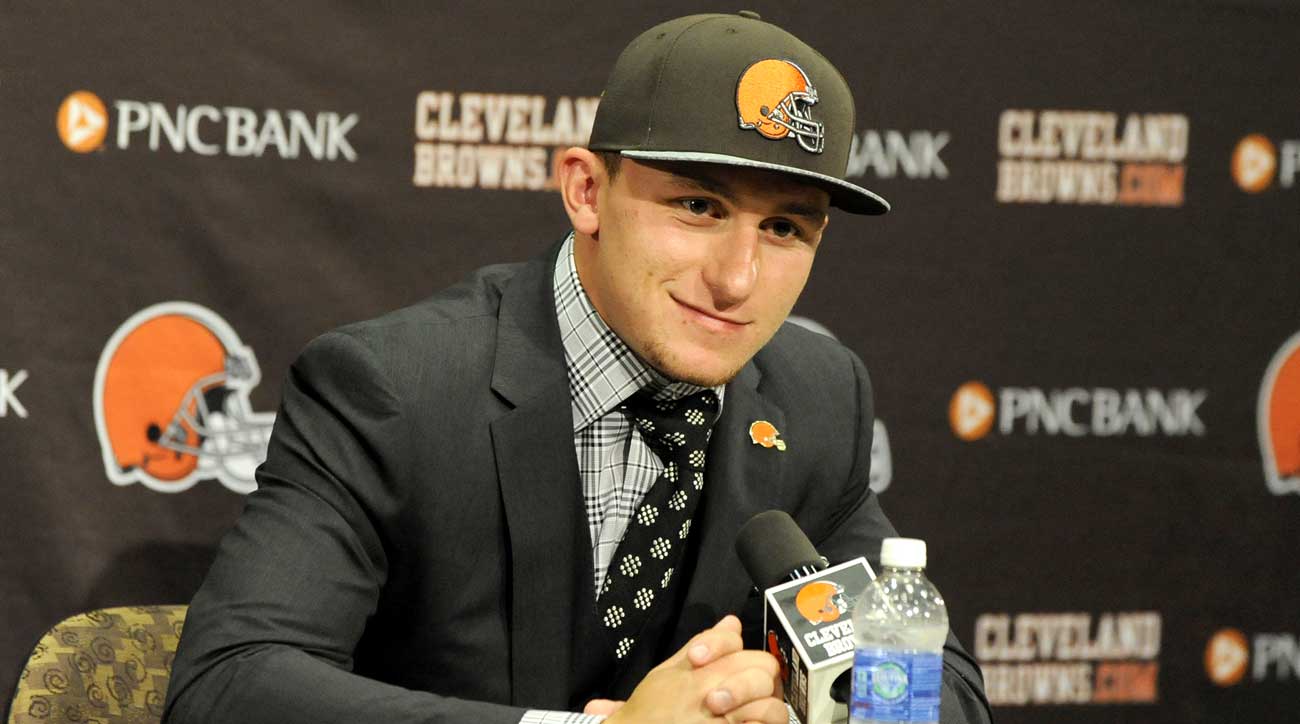
8. May 2014: The Browns draft Johnny Manziel, Joel Bitonio and Christian Kirksey
The 2014 draft was important for several reasons. Cleveland started with the fourth overall pick, but moved back to the ninth pick and acquired Buffalo’s first- and fourth-round picks the following year in the process. (The Bills took Sammy Watkins fourth.) The move back was indicative of a larger organizational desire to stockpile picks under Sashi Brown—the Browns moved down in the first round four times between 2014 and 2017.
With the two picks in the first round (thanks to the Trent Richardson trade), the Browns made some hefty contributions to their notoriously poor drafting record. After receiving Buffalo’s ninth pick, the Browns gave Minnesota a fifth-rounder to move up one spot. Then at No. 8 they drafted Justin Gilbert, who played just two seasons in Cleveland. They also traded up from Indy’s original No. 26 to No. 22 so they could pick lightning rod Johnny Manziel. Manziel, of course, was supposed to be the Browns’ quarterback of the future, as the team had waived 2012 first-round pick Brandon Weeden after just 20 starts in two years. Haslam also famously said that a homeless man helped him make the decision to pick the former Heisman Trophy Winner. Well, Manziel started just eight games in two years.
The Browns did make nice picks in second- and third-rounders Joel Bitonio and Christian Kirksey, who have become longstanding contributors. Still, whiffing on two first-rounders set the team back several years.
9. August 2014: Josh Gordon is suspended for the entire 2014 season
After his two-game suspension in 2013, Gordon was suspended for the entire 2014 season after failing another drug test. Gordon ended up playing five games in 2014 after being reinstated, but he was later suspended for the entire 2015 season for another violation of the league’s substance abuse policy, and he didn’t play at all in 2016 after enrolling in rehab.
The Browns thought they found a future star in Gordon, but his inability to stay on the field became a distraction and deprived the many quarterbacks who cycled through Cleveland of a legitimate No. 1 receiving threat. We won’t include each step in Josh Gordon’s saga as bullet points on this list, but you can read a separate timeline of his highs and lows or MMQB staff writer Ben Baskin’s feature on Gordon’s efforts to stay sober.
10. February 2015: The Browns sign Josh McCown to a three-year deal, one season after drafting Manziel
The signing of McCown all but signaled the end for Brian Hoyer, who went 10-6 as a starter in two seasons with the Browns. Johnny Manziel started two games his rookie season, but the month before he had voluntarily entered rehab. Manziel was released from rehab in April and returned to the Browns in 2015, but the revolving door of Browns’ quarterbacks kept spinning.
11. October 2015: Philip Rivers outduels Josh McCown in a thrilling second half
In the moment, this Week 4 game didn’t seem like it would have major ramifications. It did.
After a back-and-forth, tightly-contested affair, Philip Rivers led a drive in the waning minutes to set up a walk-off field goal by Josh Lambo. The Browns went on to finish 3-13 and earn the second pick in the next draft, and the Chargers went 4-12 to claim the third, so a different result in this game could have greatly altered the path of both franchises.
With that third pick, the Chargers took edge rusher Joey Bosa, who has gone on to become a Pro Bowler. We’ll get to the Browns’ draft a little later.
12. January 2016: In another front office re-shuffle, Paul DePodesta is hired as chief strategy officer and Sashi Brown is promoted to executive vice president of football operations. GM Ray Farmer and head coach Mike Pettine are fired.
More front office turnover: Pettine was fired as head coach after going 10-22 in two seasons, and Haslam decided to oust Farmer, who never hired a coach during his tenure at GM. In turn, Sashi Brown got promoted and Haslam brought in Paul DePodesta, previously the vice president of player development for MLB’s New York Mets, to serve as Cleveland’s chief strategy officer. Brown would have final say on roster decisions, and DePodesta, coming from a baseball background, would take on bigger picture role centered around vision and strategy. (DePodesta would also report directly to Haslam.) If you’re keeping score at home, this new leadership structure would be Cleveland’s third in four years.
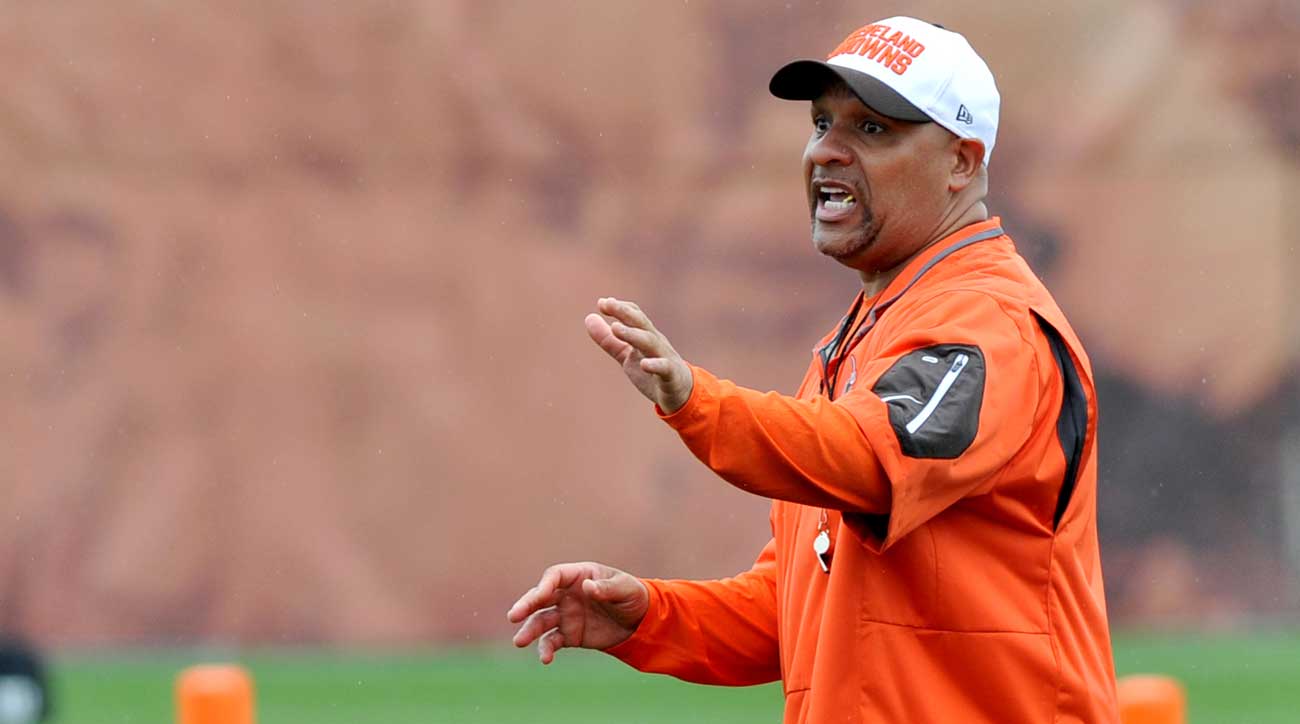
13. January 2016: The Browns hire Hue Jackson as head coach
The Browns hired Bengals offensive coordinator Hue Jackson a little over a week after firing Pettine. Jackson had previously been a head coach for the Raiders, where he went 8-8 in one season. The Browns gave Jackson, their No. 1 choice, significant personnel control as part of the hire. Other coaches hired around the league that offseason included Doug Pederson, Adam Gase, Chip Kelly and Ben McAdoo.
14. March 2016: The Browns cut Johnny Manziel and sign Robert Griffin III
Less than two years after it started, the Johnny Manziel era came to an end in Cleveland when the Browns cut him. Manziel, who endured a great deal of struggles both on and off the field, will go down as one of the biggest disappointments in Browns history. The Browns signed oft-injured Robert Griffin III, who had been cut after four seasons in Washington, to a two-year deal. RG3 was given the chance to compete with McCown for the starting job and won it before Week 1.
15. April 2016: The Browns trade down with the Eagles in the draft
Remember that loss to the Chargers that helped the Browns secure the No. 2 pick? The week before the draft, the Browns dealt it to the Eagles, who were desperate to move up and draft either Carson Wentz or Jared Goff. They took Wentz after the Rams picked Goff No. 1 overall.
The Browns received a war chest of picks in return: the No. 8 overall pick, plus a third- and fourth-round pick in this draft, plus a 2017 first-rounder and a 2018 second-rounder in exchange for the No. 2 pick and a conditional fifth-round pick in 2017. The Browns could’ve used a quarterback too (what else is new), but instead they chose to move back, netting an immense haul of picks in the process. This kept perfectly with Sashi Brown’s build-for-the-future approach.
16. April 2016: The Browns trade down with the Titans in the draft
Yes, the Browns moved down again in the 2016 first round, even after the trade with the Eagles. This time, the Browns traded with the Titans, who moved up seven slots to select offensive tackle Jackson Conklin at No. 8. In return, the Browns got the No. 15 pick (used on receiver Corey Coleman), a third-round pick and a 2017 second-round pick. More assets for Sashi Brown & Co.
17. April 2016: The Browns draft linebacker Joe Schobert in the fourth round
This may have seemed minor at the time, but Schobert, who made the Pro Bowl in 2017 as a replacement, turned out to be a valuable player.
18. August 2016: The Browns trade Andy Lee and a 2017 seventh-round pick to the Panthers for Kasey Redfern and a 2018 fourth-round pick
Punter swap alert! This one isn’t notable quite so much for the actual punters traded, though Lee was a good punter who made the All-Pro team three times in San Francisco before his one year in Cleveland—but more for what it later turned into. Stay tuned.
19. January 2017: The Browns finish 1-15 after Landry Jones leads the Steelers to a comeback overtime win in Week 17
The final day of the regular season had huge draft implications for the Browns, and it came right down to the wire. Facing a Landry Jones-led Steelers team that had already clinched a playoff berth, the Browns led 14-0 in the first half and even led in overtime after kicking a field goal on the extra period’s opening drive. Jones threw three touchdown passes, however, including a game-winner with 2:57 left in overtime to beat the Browns and ensure Cleveland would earn the No. 1 pick. The Browns entered the game with the worst record in football by a game, but the 49ers would have picked first overall if the Browns had won.
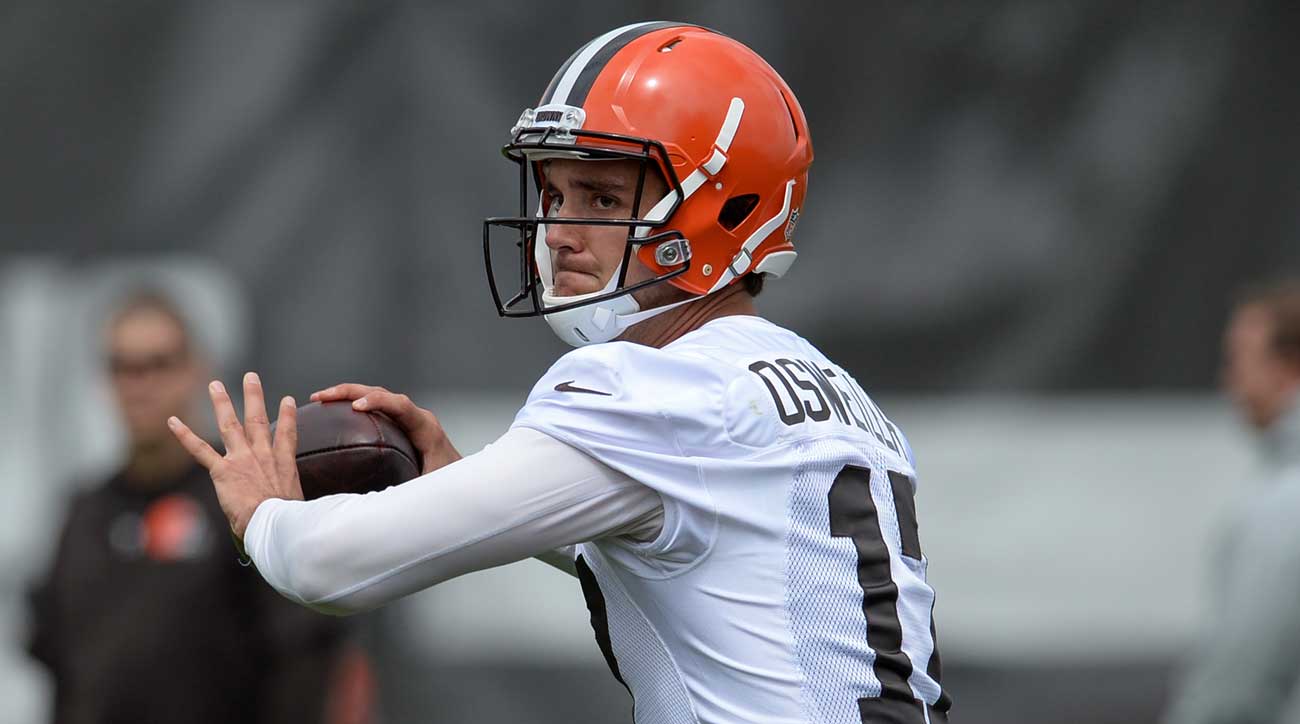
20. March 2017: The Browns trade a fourth-round pick to the Texans for Brock Osweiler, a 2018 second-round pick and a sixth-round pick
This was a surprising, NBA-esque move not typically seen in the NFL. It was essentially a salary dump by the Texans, who had signed Osweiler to a four-year, $72 million deal after he had started seven games for the Super Bowl champion Broncos. The Browns had a huge amount of cap space, and were willing to absorb Osweiler’s $16 million guaranteed salary, in exchange for a valuable draft asset.
The Browns cut Osweiler in September, and paid him all of that $16 million, so Sashi Brown and the Browns’ brass effectively paid $16 million for a second-round pick. As far as cap space and team-building go, this was a creative way to add future value. The Browns would use that second-round pick to draft Georgia running back Nick Chubb in 2018.
21. April 2017: The Browns draft Myles Garrett No. 1 overall
Thanks in part to losing that overtime game to Pittsburgh—not to mention 14 other games—the Browns had the top overall pick in the 2017 NFL draft. They used it on Garrett, a defensive end from Texas A&M. In two years, Garrett has 20.5 sacks and 47 quarterback hits in 27 career games and made his first Pro Bowl in 2018.
Of course this decision meant passing on a trio of quarterbacks who were picked in the first round: Mitchell Trubisky, Patrick Mahomes and Deshaun Watson.
22. April 2017: The Browns trade down with the Texans in the first round
After taking Garrett No. 1, the Browns still held the No. 12 pick thanks to the previous season’s trade with the Eagles. Cleveland opted to pass on a quarterback again, this time dealing the No. 12 pick to the Texans, who moved up to get Watson. In return, Cleveland received the No. 25 pick and a 2018 first-round pick. The Browns used the No. 25 pick to take Michigan safety Jabrill Peppers.
23. April 2017: The Browns draft DeShone Kizer
Using the second-round pick they acquired from the previous year’s trade with the Titans—the second time they traded back in 2016’s first round—the Browns selected Notre Dame quarterback DeShone Kizer, taking yet another swing on a QB. The revolving door kept spinning.
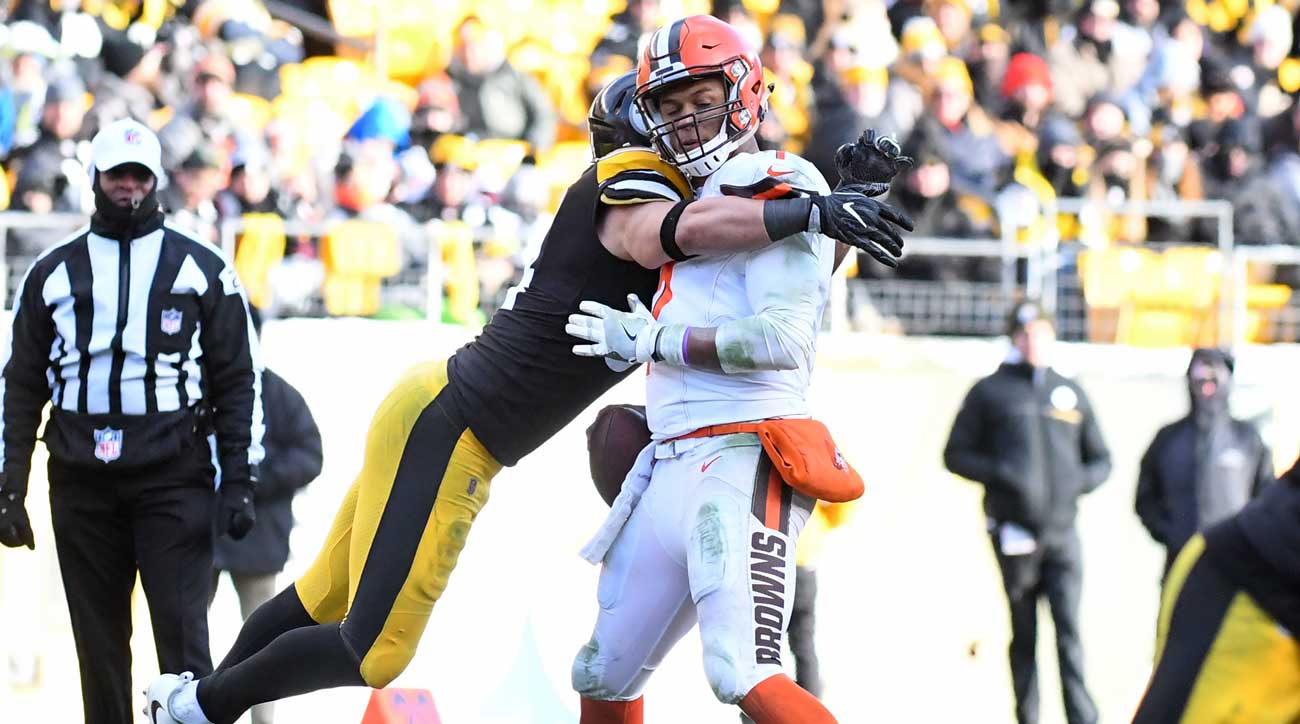
24. December 2017: The Browns close out the season 0-16, securing the No. 1 overall pick again
A season after going 1-15, the Browns became the second team in league history to go 0-16. Kizer started 15 games as a rookie, throwing 11 touchdowns and 22 interceptions. A 28-24 loss to the Steelers in Week 17 sealed the winless season. For the second consecutive year, the Browns finished with the league’s worst record.
25. November 2017: Texans QB Deshaun Watson tears his ACL in practice
Watson became the Texans’ starter at halftime of Week 1, and the rookie signal-caller was tied for the most touchdown passes in the NFL when he tore his ACL at practice seven games into the season. The Texans, then 3-4 with legitimate playoff aspirations (in the season Colts QB Andrew Luck missed entirely), turned to a combination of Tom Savage and T.J. Yates in Watson's absence. Houston’s season spiraled, with eight losses in the final nine games, ultimately finishing 4-12. Houston had traded its first-round pick to the Browns to acquire Watson during the 2017 draft, and that pick rocketed up to No. 4 overall due largely to Watson’s injury.
26. December 2017: The Browns hire John Dorsey as general manager and fire Sashi Brown
Enough was enough for Jimmy Haslam, so he fired Sashi Brown after the worst stretch of seasons in franchise history. (Of course, Brown's forward-looking strategy was one reason the stretch was so bad in the short-term.) A day later, he hired former Chiefs GM John Dorsey to become the top man in the front office. Dorsey represented the fourth regime in six years for the Browns, and, notably, he walked into the job with a plentiful arsenal of draft picks and a relatively clear salary cap situation, in large part thanks to Brown. Hue Jackson remained head coach after going 1-31 in two seasons at the helm (and fulfilled his promise to jump into Lake Erie).
27. January 2018: The Browns hire Freddie Kitchens as running backs coach and Adam Henry as receivers coach
Despite retaining Hue Jackson, Dorsey shuffled the offensive coaching staff when he took over. Cleveland hired Cardinals running backs coach Freddie Kitchens to the same title. Dorsey also hired Giants wide receivers coach Adam Henry (also formerly of LSU) to the same title.
28. March 2018: The Browns trade for Jarvis Landry, sending a fourth-round pick and a 2019 seventh-round pick to the Dolphins
Remember that punter swap in August 2016? The Browns acquired a 2018 fourth-rounder as part of the trade that sent punter Andy Lee to Carolina, and Cleveland used that pick, along with a future seventh-rounder, to acquire Jarvis Landry from a Dolphins team trying to rebuild and shed future salary. About a month later, the Browns inked Landry to a five-year, $75 million deal. The Browns got a much-needed receiving threat at a reasonable price. Landry was also a former LSU Tiger, who had played for receivers coach Adam Henry in Baton Rouge.
29. March 2018: The Browns trade DeShone Kizer to the Packers for safety Damarious Randall (plus pick swaps in the fourth and fifth rounds)
Dorsey dealt Kizer to take a flier on Randall, a former first-round pick who flashed talent but battled injuries in Green Bay. The Browns moved down in the fourth and fifth rounds of the 2018 draft as part of the trade, but they traded a high-end backup quarterback (at best) for an upgrade at one of their starting safety spots. The Browns also knew at the time they could address their quarterback need with two picks in the top five of the upcoming draft.
30. April 2018: The Browns draft Baker Mayfield No. 1 overall
Finally, the Browns took a quarterback high in the draft. After trading out of spots that became Carson Wentz and Deshaun Watson, after taking notorious busts Brandon Weeden and Johnny Manziel in the 20s, Dorsey pulled the trigger on Baker Mayfield, a 6'1" former walk-on who lit the country on fire and won the Heisman Trophy at Oklahoma in 2017. Dorsey kept the decision under wraps until late in the process, and the pick came as a surprise to many, especially with a more prototypical option in Sam Darnold still on the board. The 2018 quarterback class was debated endlessly, with Mayfield, Darnold, Josh Allen, Josh Rosen and Lamar Jackson all taken in the first round. Some even advocated that the Browns should take Penn State RB Saquon Barkley No. 1 and then pick whichever QB was available at No. 4. But Dorsey got his man, and now hopes the revolving door at quarterback will finally stop spinning.
31. April 2018: The Browns use extra draft capital to select Denzel Ward No. 4 and Nick Chubb No. 35
After Mayfield, Barkley and Darnold came off the board 1-2-3, the Browns had several talented players available at No. 4, with the pick acquired from the Texans. Dorsey elected to pick Ohio State shutdown cornerback Denzel Ward, who went on to reach the Pro Bowl in his rookie season.
The Browns weren’t done cashing in on Texans draft picks. The next night they drafted Nick Chubb with Houston’s early second-round pick, which they had acquired separately in the Brock Osweiler deal.
32. April 2018: The Browns move up to draft Antonio Calloway
Using the fourth-round pick they got from the Packers in the Deshone Kizer deal, the Browns moved up nine spots to draft wide receiver Antonio Calloway, an uber-talented player at Florida who fell in the draft because of a combination off-the-field issues, including a sexual assault investigation and a failed drug test at the NFL scouting combine. The move underscores what’s become a trend in John Dorsey’s approach to building the Browns: Bet on talent, even if it comes with character concerns. Callaway had 586 receiving yards and five touchdowns as a rookie.
33. September 2018: The Browns trade Josh Gordon to the Patriots for a 2019 fifth-round pick
Gordon had a game-tying touchdown catch late in the fourth quarter of a Week 1 tie with the Steelers, but the Browns opted to finally move on from him after that. The Browns traded him to New England, opening up playing time for Antonio Callaway and closing the book on the turbulence of the Gordon era in Cleveland.
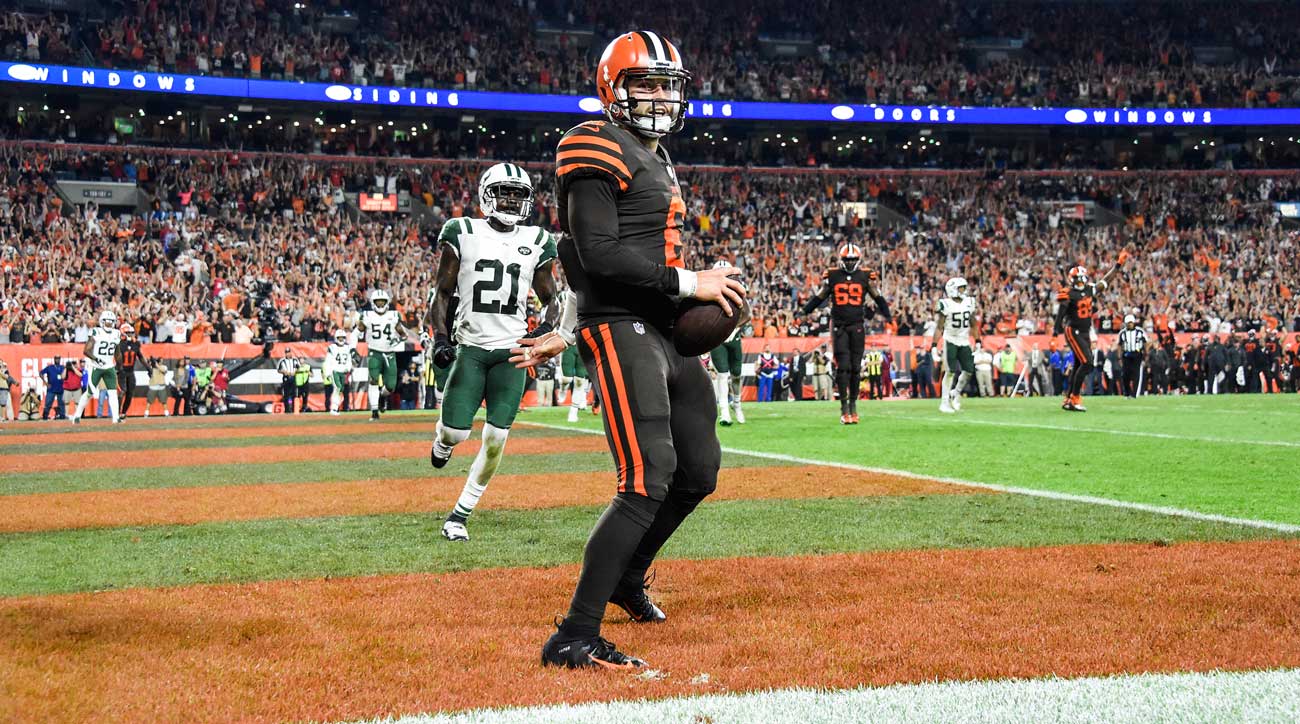
34. September 2018: Baker Mayfield comes off the bench and leads the Browns to their first win in 635 days
Tyrod Taylor began the 2018 season as the Browns’ starting quarterback, but his stint was short-lived. When Taylor left a Week 3 Monday Night Football game against the Jets with an injury, Mayfield took the field for the first time and starred in a comeback win—the Browns’ first since December 2016. Mayfield outplayed fellow rookie Sam Darnold by completing 17-of-23 passes for 201 yards (with no touchdowns or picks), and he also caught a two-point conversion from Jarvis Landry in the third quarter. Mayfield led a 75-yard game-winning drive that spanned nearly seven minutes in the fourth quarter, at which point one thing was clear: The Mayfield era was officially underway in Cleveland.
35. October 2018: The Browns trade Carlos Hyde to the Jaguars for a fifth-round pick
The Browns had signed Carlos Hyde to a three-year deal in March, following Hyde’s four seasons in San Francisco. That was before they drafted Chubb in the second round. They traded Hyde to Jacksonville six games into the season, creating an opening for Chubb to take on an elevated role in the offense. Chubb posted three 100-yard rushing performances in the Browns’ final seven games, including a 176-yard game against the Falcons in November. Dorsey opened up a role for his new running back and added an extra draft pick in the process.
36. October 2018: The Browns fire Hue Jackson and Todd Haley, and promote Freddie Kitchens to offensive coordinator and Gregg Williams to interim head coach
A day after a 33-18 loss to the Steelers that dropped Cleveland’s record to 2-5-1, Dorsey fired Jackson and offensive coordinator Todd Haley, both of whom had clashing views over the direction of the offense. After a Week 7 loss to Tampa Bay, Jackson publicly declared his intention to get more involved in the offense. Amid the rift between Jackson and Haley, Baker Mayfield appeared to back Haley, publicly saying, “We don’t need to change much” on offense. With the dysfunction swirling around the rookie quarterback, Dorsey ousted both Jackson and Haley, and promoted defensive coordinator Gregg Williams to interim head coach. Running backs coach Freddie Kitchen became the offensive coordinator and play-caller. Jackson became the sixth-consecutive Browns coach to get fired after a loss to the Steelers.
37. December 2018: The Browns win three straight games, reaching .500 at 7-7-1
When Kitchens began running the offense, Mayfield began to flourish and the team started winning. The Browns won five of their final eight games with Williams as head coach and Kitchens calling plays, including a three-game winning streak from Weeks 14-16. Mayfield threw six touchdowns to just one interception during the three-game stretch (and seven touchdowns to no interceptions during a two-game winning streak before that).
The last of those three games, a December 23 win over the Bengals, lifted the team to 7-7-1, marking the first time the Browns had a .500 record that late in the season since 2007. Though the team lost its Week 17 game to finish 7-8-1, Mayfield’s play left many Browns fans feeling like they finally had the franchise quarterback that had eluded the team for years, if not decades. He finished his rookie season with 3,725 yards, a 63.8 completion percentage, 27 touchdowns and 14 interceptions, finishing second to Barkley for the NFL’s Offensive Rookie of the Year Award.
38. January 2019: The Browns promote Freddie Kitchens to head coach
When the offseason rolled around, Dorsey had a decision to make about Cleveland’s head coaching position. Dorsey interviewed a host of candidates from different backgrounds, from former Lions head coach Jim Caldwell to Vikings offensive coordinator Kevin Stefanski to Patriots linebackers coach Brian Flores. Ultimately, Dorsey tabbed Kitchens, the seventh candidate he interviewed, to continue leading the Browns. Kitchens’s strong rapport with Mayfield as a play-caller won the front office over, and a man who was a position coach 12 months earlier become a head coach for the first time at any level.
39. February 2019: The Browns sign Kareem Hunt
John Dorsey’s willingness to gamble shows up once again. Like he did with Antonio Callaway, Dorsey decided to bet on talent—despite glaring character concerns—when he signed Kareem Hunt, who had been cut by the Chiefs in November after a video surfaced of Hunt kicking a woman during a February 2018 incident in Cleveland, of all places. The league later announced that Hunt would be suspended eight games for a violation of the league’s personal conduct policy. Dorsey, who was with the Chiefs when they drafted Hunt in 2016, decided to sign him to a cheap deal, despite his checkered past and the backlash that came with the move.
40. March 2019: The Browns trade for Giants edge rusher Olivier Vernon and wide receiver Odell Beckham Jr.
The Browns sent guard Kevin Zeitler and a fifth-round pick to the Giants in exchange for expensive pass-rusher Olivier Vernon and a fourth-round pick. With 2018 second-round pick Austin Corbett available to provide a cheaper option at guard, Dorsey decided to add Vernon to bookend a pass-rush that features a star in Myles Garrett. With Mayfield just one season into a cost-controlled rookie deal, Dorsey opted to use some of his team’s plentiful cap space to get another talented edge player.
Just days after completing the Vernon trade, the Browns and Giants completed another swap, this one even more impactful: The Giants sent wide receiver Odell Beckham Jr. to the Browns for a first-round pick (No. 17 overall), a third-round pick and former first-round pick Jabrill Peppers. (Technically the two trades were sent to the league office as one giant deal, even though the two agreements were reported days apart during the legal tampering period.)
Beckham, who had signed a five-year contract extension with the Giants back in August 2018, is reunited with receivers coach Adam Henry, who coached him with the Giants and at LSU, and Jarvis Landry, Beckham’s former LSU teammate. Beckham made headlines for a variety of reasons in New York, but he is second in league history in receiving yards per game. He adds another star to an offense that already includes Hunt, Chubb, Landry and Callaway, not to mention Mayfield at the center of it.
Following the Beckham trade, the Browns’ Super Bowl odds got as short as 14-1, tied for fifth in the league in some places.
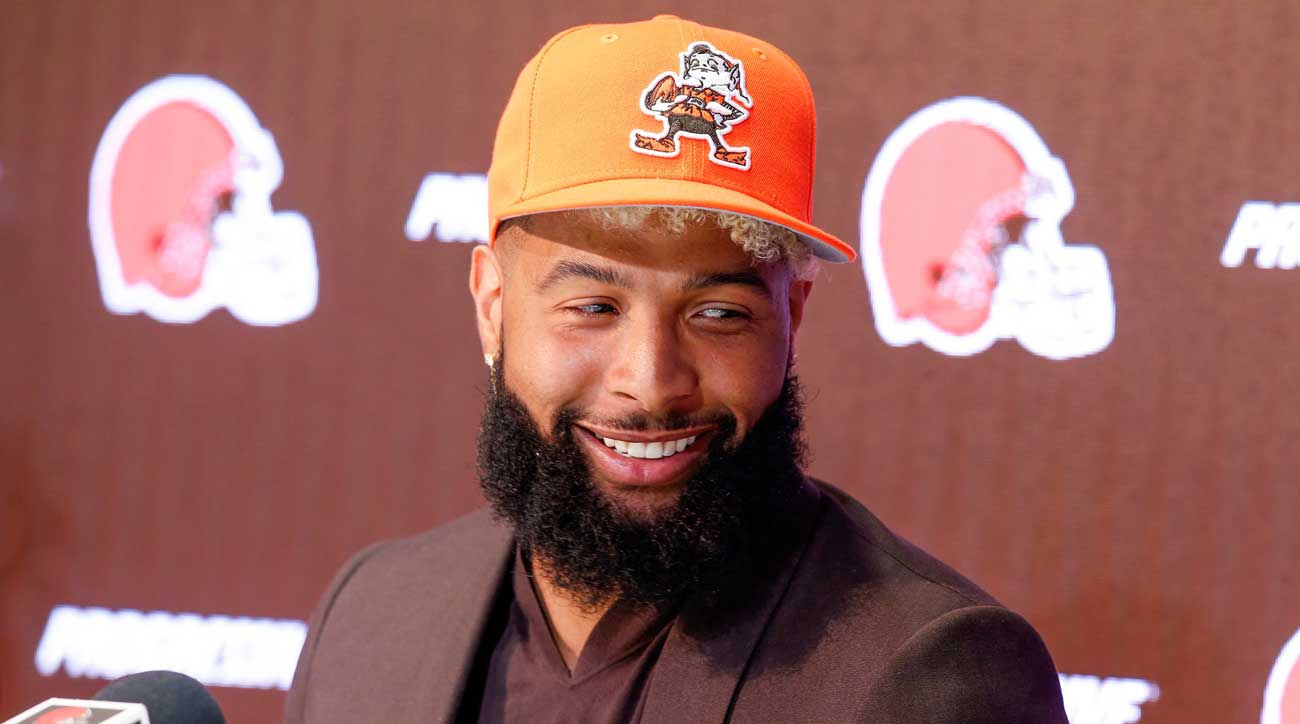
After nearly a decade of frequent coaching changes, front office re-boots and quarterback tribulations, the Browns enter the 2019 season with greater optimism than they’ve had in years.
Still, as this era of Browns football proves, optimism and splashy offseasons do not always translate to on-field results. If it feels like this Browns team could be different, that wouldn’t be the first time. Just ask Cleveland fans. These 40 turning points show the winding path it’s taken for the Browns just to get to this point, but it’s still unknown how many more it’ll take for them to reach the ultimate goal.
• Question or comment? Email us at talkback@themmqb.com.
